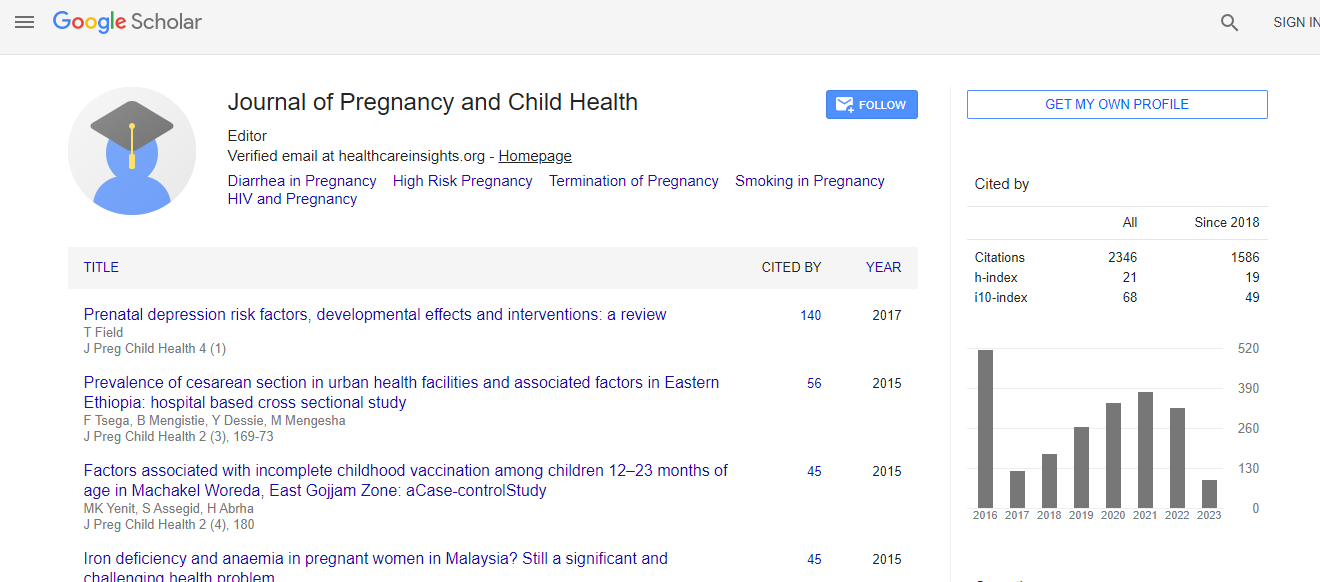Research Article
The Impact of Birth Preparedness on Pregnancy Outcome: Findings from Lurambi Sub County, Kakamega County, Kenya
Inyangala Hudson1,2*, Gatongi PM2, Nyongesa P2, Makwali J3 and Mudany M1
1Jhpiego Corporation, An affiliate of Johns Hopkins University Nairobi, Kenya
2Moi University, School of Public Health, Kenya
3University of Eldoret, Department of Biological Sciences, Kenya
- *Corresponding Author:
- Hudson Inyangala
Jhpiego Corporation
An affiliate of Johns Hopkins University Nairobi, Kenya
Tel: 254721727398
E-mail: Hudson.Inyangala@Jhpiego.org
Received Date: June 25, 2016; Accepted Date: July 20, 2016; Published Date: July 26, 2016
Citation: Hudson I, Gatongi PM, Nyongesa P, Makwali J, Mudany M (2016) The Impact of Birth Preparedness on Pregnancy Outcome: Findings from Lurambi Sub County, Kakamega County, Kenya. J Preg Child Health 3:269. doi:10.4172/2376-127X.1000269
Copyright: © 2016 Hudson I, et al. This is an open-access article distributed under the terms of the Creative Commons Attribution License, which permits unrestricted use, distribution, and reproduction in any medium, provided the original author and source are credited.
Abstract
Background: Annual global estimate of 287,000 maternal deaths were recorded in 2010 as a result of complications of pregnancy and childbirth. Sub-Saharan Africa and Southern Asia accounted for 85% of this burden (245,000 maternal deaths). Birth preparedness and complication readiness (BP/CR) is a relatively common strategy employed by numerous groups implementing safe motherhood programs. Aim: To determine the link between birth preparedness and complication readiness to pregnancy outcomes. Methods: Health facility based cross-sectional study was used among women in the reproductive age group 15-49 years at 36 weeks and above of gestation who were attending Antenatal care (ANC). The pregnancy outcomes were defined as either favourable or unfavourable events for both mother and baby. A birth preparedness assessment index (BPAI) was developed and used to assess preparedness of respondents. Results: The respondents were at different levels of birth preparedness based on a Birth Preparedness and Assessment Index (BPAI); 28.9% were at level 1; 40.0% at level 2; 25.6% at level 3 and 6.4% at level 4. There were no cases reported at level 5 which represented the best level of preparedness. However, there was no relationship between pregnancy outcome and the level of birth preparedness (p=0.915). The ANC attendance was associated with birth preparedness (Odds ratio [OR]=2.7026, 95% confidence interval), which suggested that those mothers who had 3 or more ANC visits, undertook adequate birth preparations were almost 3 times more likely to experience favourable birth outcome than those who did not. Conclusion: The age of the mother, marital status, ANC attendance, delivery preparations and birth weight were the most significant variables in determining pregnancy outcome. Therefore, there is need for community education on preparation for birth and its complication.

 Spanish
Spanish  Chinese
Chinese  Russian
Russian  German
German  French
French  Japanese
Japanese  Portuguese
Portuguese  Hindi
Hindi 
